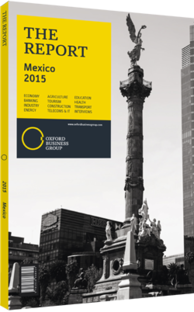Building bridges: MILA is helping to open up the country’s equities
In late 2014 the Mexican Stock Exchange (Bolsa Mexicana de Valores, BMV) joined the Integrated Latin American Market (Mercado Integrado Latinoamericano, MILA). The market was first set up in December 2011 by the stock exchanges of Chile, Colombia and Peru. MILA’s aim is described as “generating more and better exposure of the stock markets that integrate, as well as [a] wider range of products and opportunities for local and foreign investors”. The four countries making up MILA are also members and co-founders of the Pacific Alliance trade bloc. MILA’s basic proposition is that stocks and shares listed in one exchange should be visible and tradable from all the others. In the first pilot transaction carried out in December 2014, brokers Grupo Bursátil Mexicano (GBM), through sister company GBM Chile, acquired a total of 200 shares in the Chilean retailer Falabella for around $1415.
Over 700 Listed Firms
MILA officials said that there are now more than 700 companies listed in the four countries, meaning that, according to the World Federation of Exchanges, it is the leading Latin American market in terms of both the number of enterprises listed and overall capitalisation. At the outset of 2015 MILA’s overall market cap was calculated at $939bn, which placed it a little ahead of Brazil’s Bovespa. But the difference is small, and at times Bovespa has been ahead. A total of six investment funds were at that point following the MILA market, including special index S&P MILA Andean 40.
The implications for Mexico are significant. Pedro Zorrilla Velasco, joint director of the BMV, said, “Mexico’s integration into MILA will help our issuers gain access to the market of South American investors, overall the MILA integration initiative will give markets more operability and liquidity, and strengthen the region.”
Jaime González Aguadé, president of Mexican regulator the National Banking and Securities Commission, told OBG, “Mexico’s participation in MILA can help us deepen our equity market. The different stock exchanges in Chile, Colombia, Peru and now Mexico have signed integration agreements – so too have the regulatory authorities in all four countries to establish a level playing field for listed companies. This will help the market grow. With Mexico now joining MILA, the combined market capitalisation is comparable to that of Brazil, which makes us an attractive market for investors.”
Gradual Integration
Analysts have argued that while Mexico’s integration into MILA is taking place gradually, it will have a greater impact over the long term. Adolfo Herrera, director-general of brokerage firm Grupo Financiero Interacciones, told OBG, “Integration through MILA is good, but it takes time. It increases interest in company shares, but we have to work to market them more effectively. I think this will be a bit like the introduction of [the International Quotation System] SIC, which connects us to US share trading. SIC was simple to understand and well-branded, but Mexican brokers were still rather slow to take it up and get those shares included in client portfolios.” In March 2015 José Oriol Bosch, general-director of BMV, said he expected trading to begin during the second half of the year. The next step would be to launch a MILA initial public offering (IPO) through BMV. He also said that while the other three exchanges already had the technical capacity to launch MILA IPOs, Mexico was not prepared. The BMV is also looking to launch an investment vehicle linked to the opening up of the oil and gas sector, as well as the viability of a hybrid between a development capital certificate and a FIBRA – the Mexican equivalent of a real estate investment trust.
Looking Ahead
Mexico’s move to join MILA is almost universally seen as a positive development that will help to deepen the local stock exchange and create opportunities for companies seeking to raise capital and investors who want to diversify their risks. The integration process will take time, though many Mexican companies are already operating across the region. The trend toward multilatinas, or Latin American multintionals, can be expected to accelerate with new opportunities opening up in the energy sector and elsewhere.
You have reached the limit of premium articles you can view for free.
Choose from the options below to purchase print or digital editions of our Reports. You can also purchase a website subscription giving you unlimited access to all of our Reports online for 12 months.
If you have already purchased this Report or have a website subscription, please login to continue.

